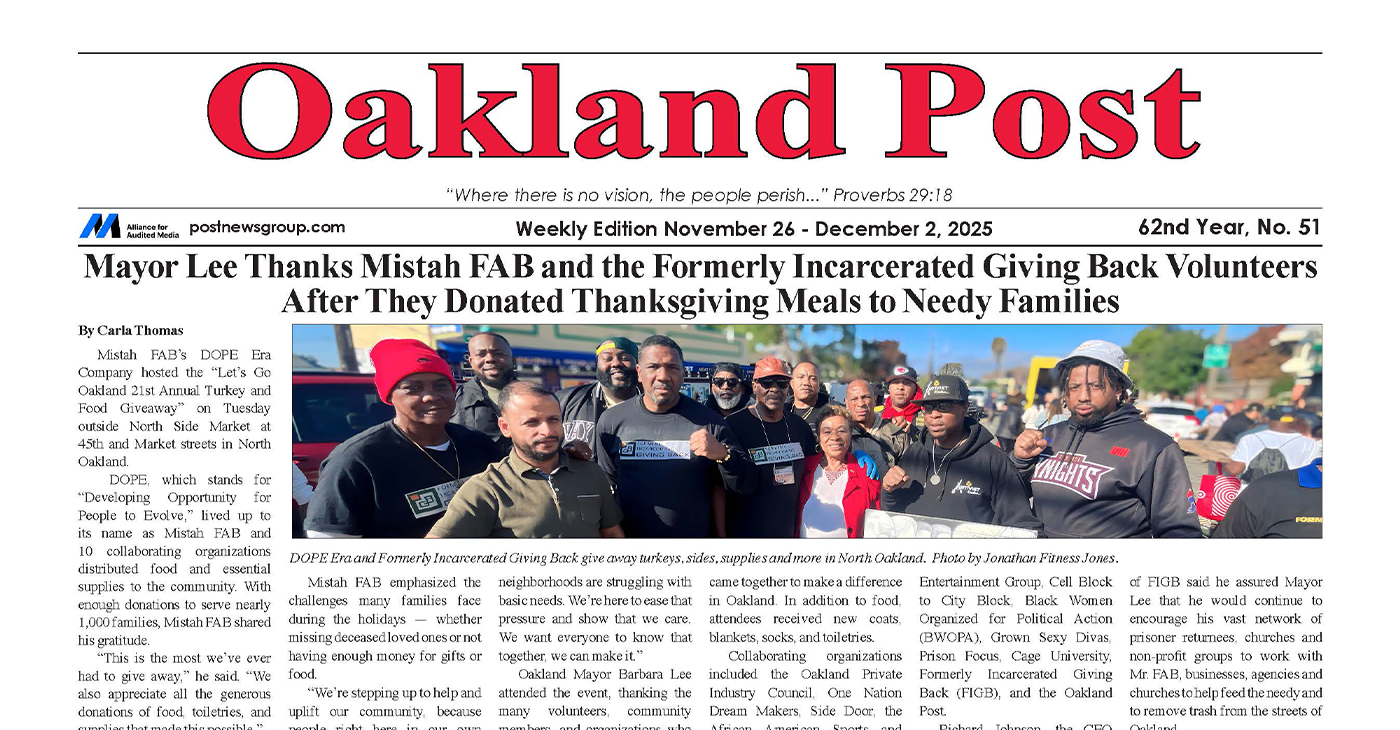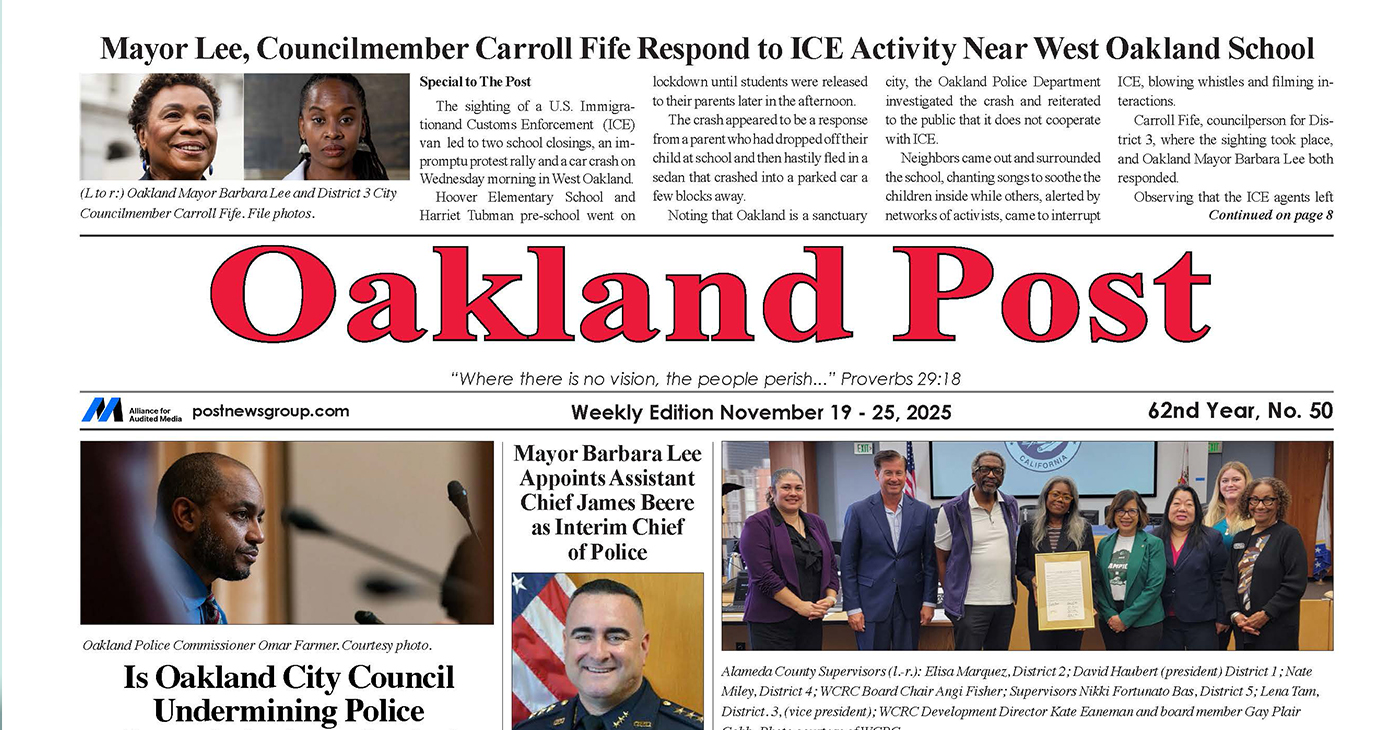Business
Blacks ‘Segregated’ in Low-Paying Retail Jobs
By Jazelle Hunt
Washington Correspondent
WASHINGTON (NNPA) – More than 1.9 million Black Americans work in retail, accounting for 11 percent of the industry’s total workforce. Despite being the second-largest source of employment for Black workers, new data from the NAACP and equality advocacy organization, Demos, finds that the industry is rife with racial inequality and poor earning potential.
According to the report, titled “The Retail Race Divide,” full-time Black and Latino salespersons earn 75 percent of the wages of their White counterparts. For Black and Latino cashiers, the figure is 90 percent. Further, Black and Latino workers are sometimes stuck in “occupational segregation;” not only are they overrepresented in low-wage industries such as retail, but they’re also overrepresented in the lowest paying positions within these industries. Consider: Black people make up 11 percent of the retail force, but 6 percent of those in managerial or leadership roles.
“They are, in effect, segregated by color and income. Now, not segregated as a matter of law, as was the case many years ago…but certainly by circumstance, by industry practice. Even where we don’t have overt discrimination that violates Title VII [of the Civil Rights Act], there are subtle forms of discrimination that may also violate Title VII, but are less obvious,” says Cornell William Brooks, president and CEO of the NAACP.
“It’s not necessarily that a company has a policy that says African Americans and Latinos should be overrepresented at the cash register and in lower paid positions. But rather, if they do not have policies to ensure that African Americans and Latinos have access to and are encouraged to apply for better paying positions as managers, there’s something profoundly wrong.”
Brittany O’Neal has worked in retail for three years, most currently in the Fashion Centre at Pentagon City in Arlington, Virginia. The 25-year-old full-time student is a few credits shy of earning a criminal justice degree, but also works full-time hours as a salesperson to support her 3-year-old son.
“The store I work at…comes with a lot of customer service. Sometimes you work really hard and [customers] end up just returning everything,” she says. “[Our pay] is all commission, unless you don’t make enough. Then you get your hourly wage.”
O’Neal says support from her family and managers in accommodating her schedule make it easier to earn enough money and still finish school. Not everyone is so fortunate; according to the report, retail wage disparities also happen through inadequate and unreliable scheduling practices. While Black, White, Latino, and Asian people work part-time at even rates, nearly half of all Black and Latino retail workers would prefer full-time hours (compared to 29 percent of Whites and Latinos). The report’s measure doesn’t include workers who want more hours while remaining part-time, which would likely play out along racial lines as well.
There’s also the difficulty in being “on-call,” a common practice among retail managers.
“Although just-in-time scheduling can have negative effects for any retail worker, there is reason to believe that the burden is disproportionately heavy on Black and Latino workers,” the report states, adding that this is the population most likely to juggle their educations, parenting, and additional employment while holding a retail job.
“Moreover, due to residential segregation and other socioeconomic constraints, Black workers have longer commute times than White workers, leading to greater time and money costs when their shifts are cut short.”
The disparities spell serious repercussions for Black Americans, and particularly Black families. Fully 17 percent of Black retail workers live below the poverty line, compared to 9 percent of retail workers overall. More than half of Black workers are responsible for at least half their household’s income, and they are the most likely of all retail workers to be the sole breadwinner in their households – 26 percent are, compared to 15 percent of White workers, and 18 percent of retail workers overall. Black retail workers are also significantly more likely to be raising children on these wages – 65 percent are, compared to the overall 33 percent.
And, according to recent analysis from the National Low Income Housing Coalition –an affordable housing research and advocacy organization – there’s nowhere in the country where a full-time minimum wage worker can afford a one-bedroom apartment (priced at the Department of Housing and Urban Development’s standard of Fair Market Rent), without paying more than 30 percent of their income.
“There’s this notion that people working in the retail industry are young, inexperienced, and lack dependents. But here’s the blue-collar reality: 90 percent of African American and Latino retail workers are over 20 years of age, and half of them provide at least 50 percent of the income their families need to survive,” Brooks says. “We’re not talking about adolescents at the cash register working part time or working to add a little something to their young budgets. We’re talking about people who have families to support.”
The effects of these disparities extend beyond retail workers’ households.
As the report explains, “Service industry employment became more central to the well-being of American workers, but the low wages and uncertain schedules that characterize that employment undermined household financial security and, by extension, growth and stability for the economy overall.”
In short, low household income translates to low consumerism, poor wealth generation, poor entrepreneurship, and slower growth in the overall economy.
The NAACP/Demos report suggests that the problems can be alleviated if retailers raise the wages for their least paid positions, as well as through state and federal policies. It also points out that legal battles and union actions have been useful tools in securing better outcomes for retail workers.
Brooks encourages people to challenge the status quo through interpersonal, legal, and civic avenues.
He says, “One of the best allies in the fight for a living wage is the NAACP. So I’d encourage people to join local branches of the NAACP, help us organize for living wages, and help us make it clear to the country that you should not have to work hard to be poor.”
Alameda County
Seth Curry Makes Impressive Debut with the Golden State Warriors
Seth looked comfortable in his new uniform, seamlessly fitting into the Warriors’ offensive and defensive system. He finished the night with an impressive 14 points, becoming one of the team’s top scorers for the game. Seth’s points came in a variety of ways – floaters, spot-up three-pointers, mid-range jumpers, and a handful of aggressive drives that kept the Oklahoma City Thunder defense on its heels.

By Y’Anad Burrell
Tuesday night was anything but ordinary for fans in San Francisco as Seth Curry made his highly anticipated debut as a new member of the Golden State Warriors. Seth didn’t disappoint, delivering a performance that not only showcased his scoring ability but also demonstrated his added value to the team.
At 35, the 12-year NBA veteran on Monday signed a contract to play with the Warriors for the rest of the season.
Seth looked comfortable in his new uniform, seamlessly fitting into the Warriors’ offensive and defensive system. He finished the night with an impressive 14 points, becoming one of the team’s top scorers for the game. Seth’s points came in a variety of ways – floaters, spot-up three-pointers, mid-range jumpers, and a handful of aggressive drives that kept the Oklahoma City Thunder defense on its heels.
One of the most memorable moments of the evening came before Seth even scored his first points. As he checked into the game, the Chase Center erupted into applause, with fans rising to their feet to give the newest Warrior a standing ovation.
The crowd’s reaction was a testament not only to Seth’s reputation as a sharpshooter but also to the excitement he brings to the Warriors. It was clear that fans quickly embraced Seth as one of their own, eager to see what he could bring to the team’s championship aspirations.
Warriors’ superstar Steph Curry – Seth’s brother – did not play due to an injury. One could only imagine what it would be like if the Curry brothers were on the court together. Magic in the making.
Seth’s debut proved to be a turning point for the Warriors. Not only did he contribute on the scoreboard, but he also brought a sense of confidence and composure to the floor.
While their loss last night, OKC 124 – GSW 112, Seth’s impact was a game-changer and there’s more yet to come. Beyond statistics, it was clear that Seth’s presence elevated the team’s performance, giving the Warriors a new force as they look to make a deep playoff run.
Activism
Oakland Post: Week of November 26 – December 2, 2025
The printed Weekly Edition of the Oakland Post: Week of November 26 – December 2, 2025

To enlarge your view of this issue, use the slider, magnifying glass icon or full page icon in the lower right corner of the browser window.
Activism
Oakland Post: Week of November 19 – 25, 2025
The printed Weekly Edition of the Oakland Post: Week of November 19 – 25, 2025

To enlarge your view of this issue, use the slider, magnifying glass icon or full page icon in the lower right corner of the browser window.
-

 Activism4 weeks ago
Activism4 weeks agoOakland Post: Week of November 12 – 18, 2025
-

 Activism3 weeks ago
Activism3 weeks agoIN MEMORIAM: William ‘Bill’ Patterson, 94
-

 Activism4 weeks ago
Activism4 weeks agoHow Charles R. Drew University Navigated More Than $20 Million in Fed Cuts – Still Prioritizing Students and Community Health
-

 Bay Area4 weeks ago
Bay Area4 weeks agoNo Justice in the Justice System
-

 #NNPA BlackPress3 weeks ago
#NNPA BlackPress3 weeks agoLewis Hamilton set to start LAST in Saturday Night’s Las Vegas Grand Prix
-

 #NNPA BlackPress3 weeks ago
#NNPA BlackPress3 weeks agoBeyoncé and Jay-Z make rare public appearance with Lewis Hamilton at Las Vegas Grand Prix
-

 Activism3 weeks ago
Activism3 weeks agoOakland Post: Week of November 19 – 25, 2025
-

 #NNPA BlackPress4 weeks ago
#NNPA BlackPress4 weeks agoThe Perfumed Hand of Hypocrisy: Trump Hosted Former Terror Suspect While America Condemns a Muslim Mayor


















































